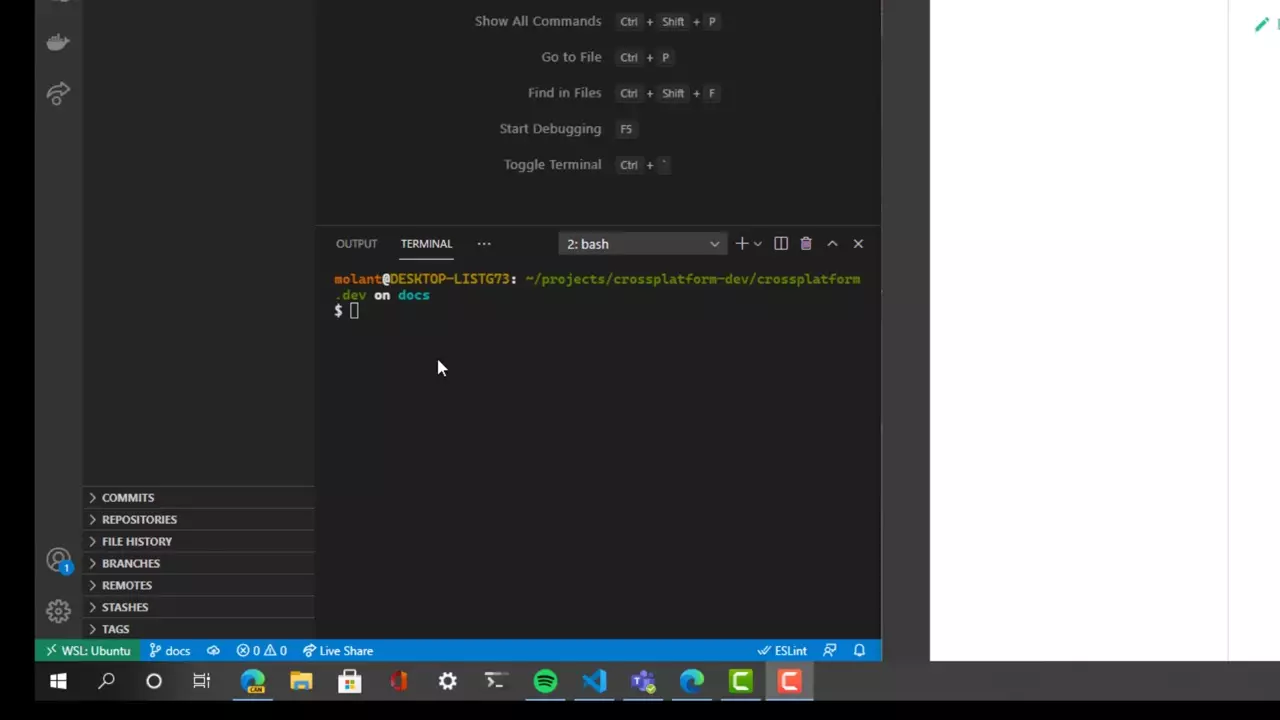Crossplatform.dev
This repository contains the code and contents of https://crossplatform.dev.
It is built using Docusaurus 2 and deployed on Netlify.
Installation
To install it locally, you will need to:
-
Clone and install the dependencies of the project:
git clone https://github.com/crossplatform-dev/crossplatform.dev cd crossplatform.dev npm install
Local Development
The project has the following folder structure:
crossplatform.dev
|
├─ blog → Markdown files with the blogposts
|
├─ docs → Markdown files with the contents of the documentation
|
├─ scripts → JavaScript with the technology scaffolders and such
|
├─ src → Docusaurus code
|
├─ static → Docusaurus static assetsThe following command will start a local development server and open up a browser window:
npm startMost changes, like markdown modifications, sidebars.js, etc. are
reflected live without having to restart the server.
Adding a new technology
To create a new technology overview, run the following command:
npm run add-technologyYou will be prompted the technology name and once provided:
- a new folder will be created under
/docs/with its name - the folder will have a few markdown files for you to complete
sidebars.jswill be updated to include the new technology- a new file will be created under
/data/technologies/TECHNOLOGY.jsfor you to complete
Additionally, there are a few markdown extensions that you
can use to interpolate and access the data under /data/
from markdown so it's easier to update the content.
Interpolating data
The contents of /data/ are accessible from markdown as a
JavaScript object that follows the same path structure and with the
contents of the json files loaded.
For example:
|- technologies
| |- electron.json
| |- ionic.jsonWill return an object like:
{
"technologies": {
"electron": { contents of electron.json},
"ionic": { contents of ionic.json}
}
}You can access this data in a couple different ways;
Accessing a property
To print the value of a property you need to write something like:
{{ path.fileName.property1.property2 }}
Following the previous example, to access the property
url under technologies/electron.json the markup will be:
{{ technologies.electron.url }}
If you want to access a particular item on an array you can also do it. The following will print the most recent version of Electron:
{{ technologies.electron.releases.0.version }}
Creating a table
The following are a series of examples of different ways to create tables interpolating data:
Comparison table
To create a table that compares a property accross different categories you use the following syntax:
{{ table folder.{}.property }}
For example, to generate a table that shows the platform support of all the technologies the code is:
{{ table technologies.{}.platforms }}
Details table
To create a table for a property that is an object you can do this:
{{ table folder.filename.objectProperty.{} }}
For example, to list the platforms supported by Electron you have to write the following:
{{ table technologies.electron.platforms.{} }}
List table
To create a table for a particular property that is an Array you can do the following:
{{ table folder.filename.arrayProperty.[] }}
For example, the following will creata a list table with the latest Electron releases.
{{ table technologies.electron.releases.[] }}
This assumes that releases is an Array of the same type of items
and it will generate a table using the property names of the 1st
object as the column names, adding a new line per item in the Array:
| Version | Date |
| --- | --- |
| vX.Y.Z | 2021/10/01 |
...If you want to just list one of the properties you can do the following:
{{ table technologies.electron.releases.[].version }}
and the output will be:
| Version |
| --- |
| vX.Y.Z |
...